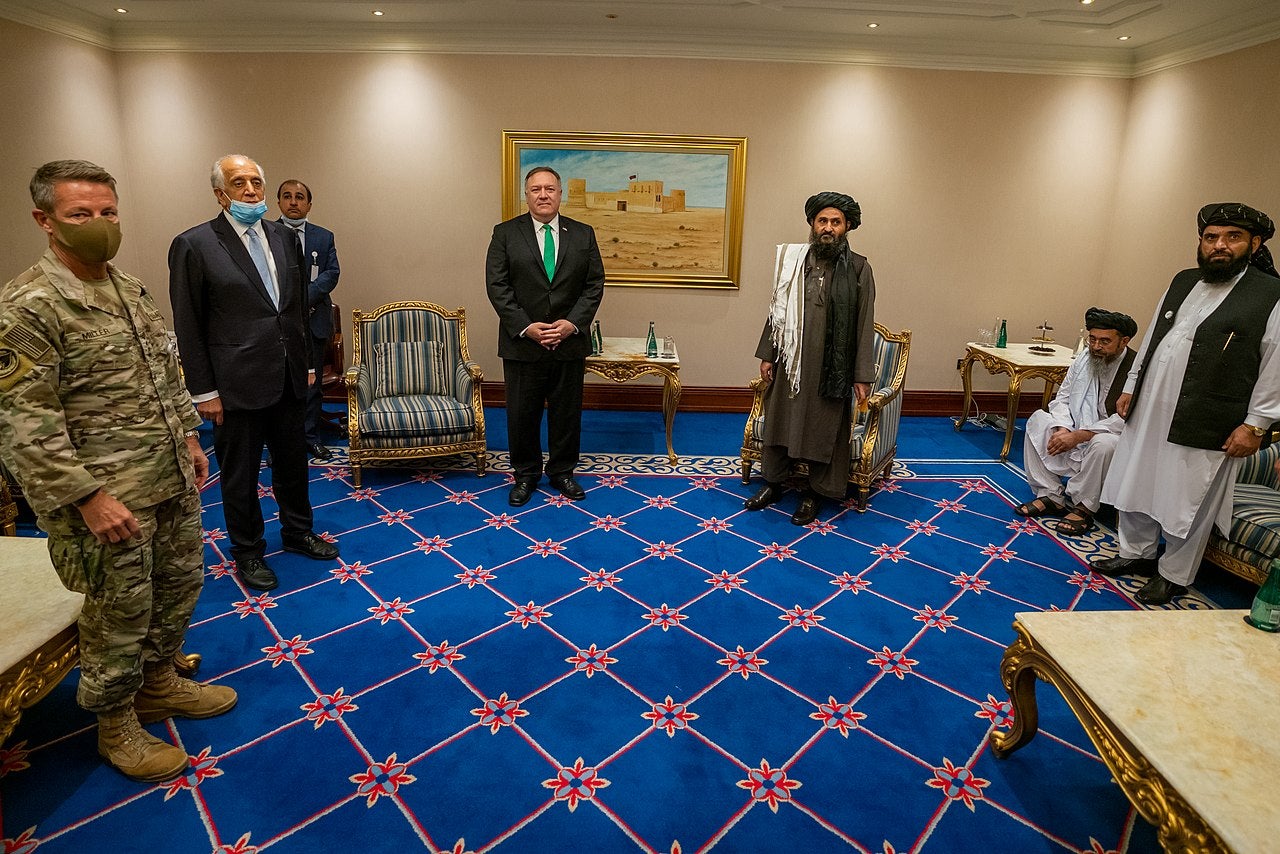Summary
Afghanistan’s domestic order has serious foundational issues, and it lives in a conflict prone region and competitive geopolitics. Bringing peace there is thus too complicated. Peace efforts have been stepped up but it may be late in the day. Instability may continue, either Kabul-led or Taliban-led.
There are conflicts within conflicts in Afghanistan, and they are beyond resolution by foreign powers, especially by military means. America no doubt failed but so did Afghanistan and, to a degree, Pakistan. Bringing peace and stability in Afghanistan will require the resolution of all these conflicts, and involve more than one dialogue, both within and around Afghanistan.
For peace to come in Afghanistan, three concentric circles must be in sync: unification and stabilisation of the country; resolution of the regional rivalries ; and management of geopolitical competition. The inner most circle of internal dynamics is the most important and difficult to resolve.
Three fundamental issues have been at the heart of Afghanistan’s domestic order: structure and the distribution of power; ethnic balance; and resistance to control and modernisation. Afghanistan has serious fault lines – ethnic, tribal, regional, sectarian and ideological – and a rural-urban divide.
We trivialise the Afghanistan problem by proposing reconciliation as the solution. Reconciliation is with someone disaffected. The Taliban are not disaffected – they are rivals in power. And this is not the only rivalry for power in Afghanistan. All its major ethnic and political factions are vying for power and view any peace process as an armed conflict. And they believe in the ‘winner takes all’ approach. No wonder, even a US$2 billion (S$2,7 billion) war could not fix the country. The end result is in front of us, and it will affect not just Afghanistan’s future but also that of Pakistan as well.
On 9 July 2021, Pakistan’s National Security Adviser Moeed Yusuf, in a briefing to the Senate Foreign Relations Committee, termed the worsening situation in Afghanistan as “extremely bad and out of Pakistan’s control.” Earlier in a briefing to the Pakistan parliament, the top military brass reportedly acknowledged that the Tehrik-i-Taliban Pakistan (TTP) and the Afghan Taliban were ideologically the same. Separately, Pakistan Prime Minister Imran Khan has also been speaking or writing about Afghanistan in equally sombre tone.
The candidness of these briefings and interviews, however, does not mask the dubious value of Pakistan’s Taliban policy. The Taliban were not a creation of Pakistan as a movement but could not have become a political force in the 1990s without the sympathy and support they enjoyed within Pakistan. After 9/11, they strengthened themselves by establishing their credentials as resistance against foreign occupation.
America’s war failed and so did the Kabul government. That facilitated the Taliban’s rise as did the continued presence of their leadership in Pakistan which helped their armed struggle. They shrewdly kept increasing their clout in Pakistan by collaborating with the TTP and some of their other extremist cohorts within the country ,which kept its security forces engaged and thus away from the Afghan Taliban. Meanwhile extremism remained a challenge in Pakistan. All that made Pakistan shy of taking on the Afghan Taliban for the fear it would create an unmanageable security crisis.
On the other hand, the TTP’s operation out of Afghanistan, possibly with the connivance of the Afghan Taliban, soured the relationship between Afghanistan and Pakistan, making the latter bet on the Taliban as a diplomatic asset. That became another reason for Pakistan’s reluctance to act against the Taliban. The Taliban’s inflexibility, Pakistan’s new emphasis on geo-economics and General Qamar Javed Bajwa’s peace offensive may have made the Taliban’s possible return to power bad news for Pakistan.
In some ways, the Taliban are the last of the long line of warlords, strongmen and power brokers that have historically existed in Afghanistan. The difference is that their ambitions are not regional but national. And they are ideological!
Since the overthrow of the monarchy in 1973 which, through a Pashtun dominated, elite-led and decentralisation-based polity, had managed to have a modicum of stability in Afghanistan, the country has endured one of the most devastating conflicts of our times. However, there is also some progress in education, women’s rights and basic freedom which unfortunately now faces an uncertain future at the hands of the Taliban.
The solution to the Taliban problem primarily lies within Afghanistan. But history does not give us confidence about the Afghans reaching an accord peacefully or without external involvement, in which regard Pakistan-Afghanistan relations will have the most consequential role. It is late in the day, but if Pakistan – the country with most leverage with the Taliban – can play some role in the peace efforts, it must. But it will need help from Kabul, and then from both China and the United States (US), directly and in the context of the extended troika of the US, China, Russia and Pakistan. Pakistan is planning to host a conference on Afghanistan, but conferences do not solve complex conflicts.
Meanwhile the US, Uzbekistan, Afghanistan and Pakistan have agreed to establish a new quadrilateral diplomatic platform focused on enhancing regional connectivity. It is a good move as prospects of regional connectivity might spur efforts to bring peace to Afghanistan. But it will have no immediate impact.
For the sake of Afghanistan and the region, we hope these peace efforts succeed. If not, armed conflict will continue with Afghanistan headed for a long spell of either Kabul-led or Taliban-led instability.
. . . . .
Professor Touqir Hussain is a Visiting Senior Research Fellow at the Institute of South Asian Studies (ISAS), an autonomous research institute at the National University of Singapore. He is a former Ambassador of Pakistan and Diplomatic Adviser to the Prime Minister of Pakistan. He can be contacted atth258@georgetown.edu. The author bears full responsibility for the facts cited and opinions expressed in this paper.
Photo credit: Wikimedia Commons
-
 More From :
More From :
-
 Tags :
Tags :
-
 Download PDF
Download PDF



